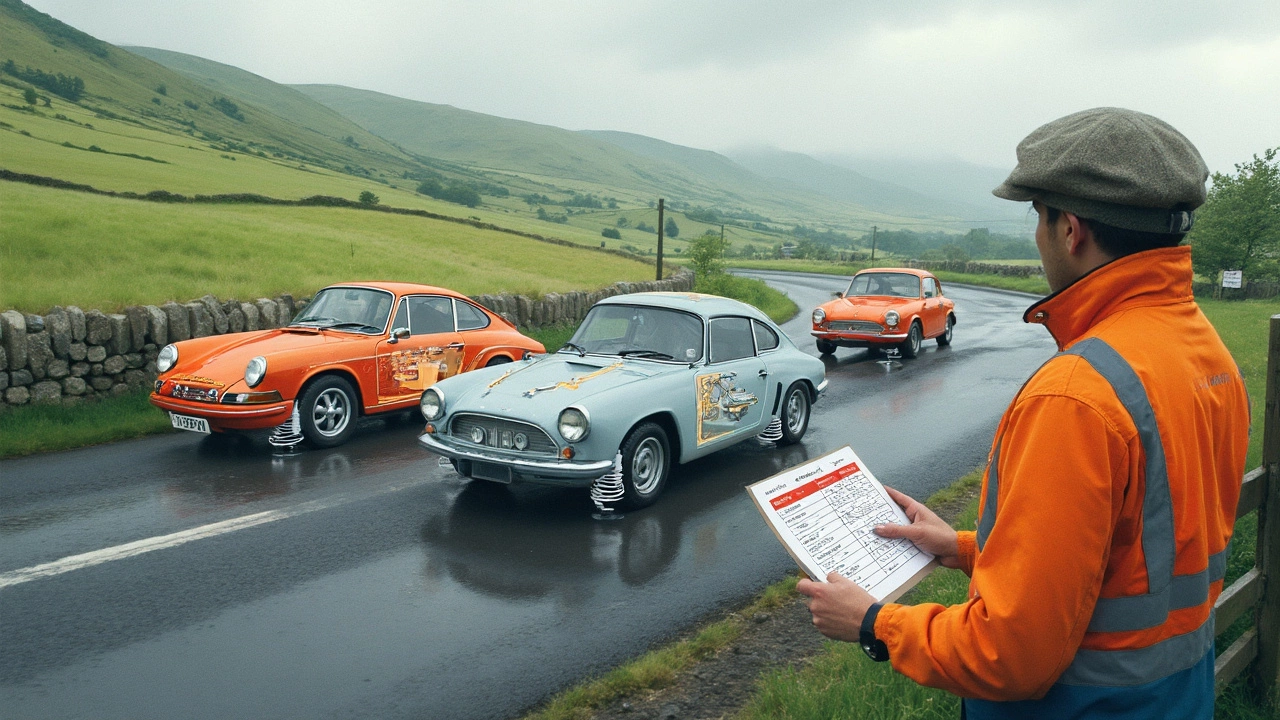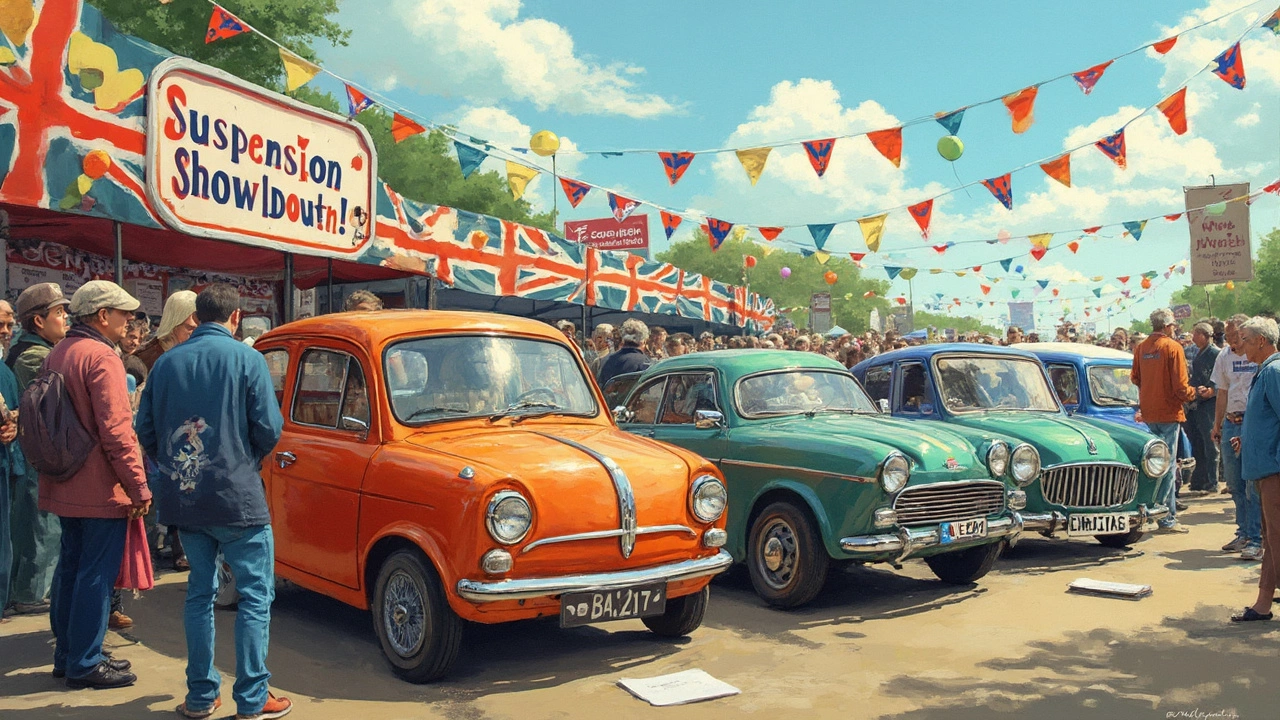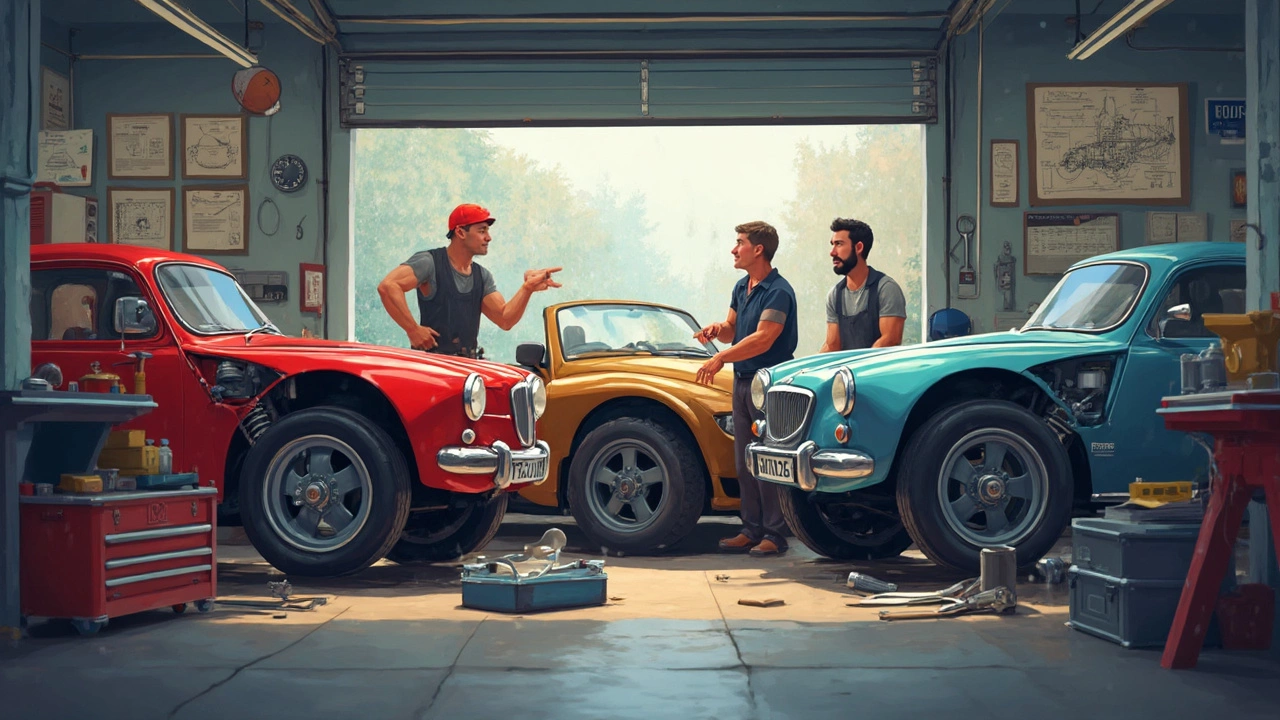If you’ve ever wondered why your drive feels like butter on one car but jarringly rough in another, chances are your front suspension is pulling the strings. This part of your car is way more than just springs and shock absorbers—it’s the secret sauce for everything from cornering to comfort.
It isn’t just gearheads obsessing over suspension types. Whether you’re looking at a budget hatchback or a sports car, the kind of front suspension under the hood has a huge impact on your daily drive. From soaking up potholes to gripping the road in a tight turn, this setup can either make or break the experience.
Knowing what’s going on up front might not sound exciting at first, but trust me: once you get a handle on the basics, you’ll never look at new cars or even your mechanic’s bill the same way again. And who doesn’t want to sound smarter next time they’re at a garage or trying to score a better deal on a used car?
- What Front Suspension Actually Does
- MacPherson Strut: The All-Rounder
- Double Wishbone: The Performance Pick
- Other Contenders: Torsion Bars and Multi-link
- Tips for Choosing Your Best Fit
What Front Suspension Actually Does
Your car’s front suspension isn’t just there to look good. It’s built to keep your wheels in contact with the road, soak up bumps, and help you steer safely. If your front suspension is even slightly off, expect a rough ride, slower handling, and more stress on your tires.
Here’s what happens in real life: Every time you hit a pothole or need to swerve, your front suspension absorbs the force—so you and your passengers don’t feel every jolt. It keeps your car from nosediving when you brake hard and helps your tires stick during fast turns. This all adds up to better control and more comfort.
Let’s break down the real jobs the front suspension handles:
- Keeps your wheels pressed to the ground for better grip and braking.
- Reduces vibrations and jolts from rough roads.
- Controls how much your car bounces or leans in corners.
- Supports the weight of the front end, including the engine.
- Links the steering parts, letting you turn the wheels smoothly.
Curious about how much work this setup actually does? Check out some numbers below:
| Stat | What It Means |
|---|---|
| Average shock force absorbed per bump | Up to 500 lbs |
| Typical tire footprint loss without working suspension | Up to 40% |
| Increase in stopping distance if suspension fails | 15-20% longer |
Bottom line: all that heavy lifting isn’t just for show. A healthy front suspension keeps you safer, makes your drive smoother, and even helps your car last longer. Ignore it, and you’ll pay the price—either at the pump, the tire shop, or the repair garage.
MacPherson Strut: The All-Rounder
If you’ve owned a car from the last forty years, there’s a good chance it uses a front suspension setup called the MacPherson strut. This design is everywhere—from economy hatchbacks to compact SUVs—because it’s simple, cheap, and gets the job done for most drivers.
What’s the secret sauce? The MacPherson strut combines a shock absorber and a coil spring into a single unit. This not only saves space but also keeps manufacturing costs low. Instead of using lots of tricky parts, this setup bolts the strut between the car’s body and a single lower control arm, making repairs faster and less painful for your wallet.
- Cheaper to build: That’s why you see them in so many mainstream vehicles.
- Easy to repair: Fewer parts means your mechanic can swap things faster (which means lower labor costs).
- Good use of space: Their slim design gives automakers more freedom in the engine bay. That’s partly why modern cars have more room for turbochargers or hybrid tech up front.
The downsides? They’re not perfect for extreme driving. The design can let the wheel angle flop around a bit during hard cornering, which isn’t great if you’re tracking lap times or hunting for perfect grip. That’s the main reason you’ll find fancier sports cars using different setups.
Here’s a quick look at how the MacPherson strut stacks up against other top designs in real-world numbers:
| Suspension Type | Average Cost to Replace (per side, USD) | Space Efficiency | Common Uses |
|---|---|---|---|
| MacPherson Strut | $300–$550 | Excellent | Most sedans, hatchbacks, small SUVs |
| Double Wishbone | $600–$900 | Average | Sports cars, premium SUVs |
| Multi-link | $800–$1,200 | Poor | High-end sedans, performance cars |
One tip—if your car’s front end starts clunking or feels floaty, a worn-out MacPherson strut is often the culprit. It’s usually a straightforward fix, so don’t sweat it too much.

Double Wishbone: The Performance Pick
Ask any car enthusiast what makes a sports car handle so well, and most of the time, they’ll point to the double wishbone setup. This design gives each wheel its own upper and lower arm, shaped kind of like wishbones (hence the name). With both arms working together, your tires stay flat on the pavement even when you’re taking hard corners or blasting down a bumpy road.
Here’s why people swear by double wishbone suspension:
- Bolder grip and better handling, especially when turning.
- More precise steering, since the wheel moves up and down in a controlled path.
- It can handle bigger brake and tire upgrades, which is why you see it on sporty models like the Honda Civic Type R and the old Honda S2000.
If you’ve ever gawked at an old NSX or caught a glimpse under a Lexus LS, you’ve seen double wishbones in the wild. Even some newer pickups and luxury SUVs use them because they balance comfort and cornering.
Here’s a quick breakdown comparing double wishbone to other front suspension types:
| Suspension Type | Handling | Ride Comfort | Common Use |
|---|---|---|---|
| Double Wishbone | Excellent | Very Good | Sports cars, luxury vehicles |
| MacPherson Strut | Good | Good | Most sedans, economy cars |
| Multi-link | Very Good | Excellent | High-end & performance cars |
If you’re thinking “sounds expensive”—you’d be right. Double wishbone isn’t cheap to make or repair. That’s why you mostly find it in pricier or high-performance vehicles. Parts are more complex and there’s less wiggle room for error when lining everything up, which makes wheel alignments a little trickier.
“The double wishbone suspension’s real advantage lies in its ability to maintain camber angle during aggressive cornering, giving sports cars the edge on track and street alike.” — Car and Driver (2023)
So, if nailing every twist and turn is what gets your heart racing, double wishbone should be at the top of your wish list. But unless you’re chasing lap times, the up-front cost and maintenance might be overkill for daily driving or quick grocery runs.
Other Contenders: Torsion Bars and Multi-link
Not every car sticks to the usual MacPherson or double wishbone game plan. Some manufacturers go with torsion bars or multi-link designs to solve specific problems. These aren’t as flashy, but they absolutely deserve a closer look—especially if you’re after something a little different for your ride.
Torsion bars are a neat alternative to coil springs. Instead of compressing a spring, these systems twist a metal bar along its axis to absorb bumps. You’ll find them in older pickup trucks and some classic European cars. Why? They’re durable, take up less room, and you can tweak them easily to raise or lower the car. For example, the original Volkswagen Beetle used a torsion bar setup, and it helped keep repairs simple.
Multi-link front suspensions, on the other hand, are a lot more modern and complicated. They use three or more arms (links) to keep everything in the right position. This creates a fine-tuned balance between comfort and handling. You’ll spot multi-link suspensions in premium brands like BMW and Mercedes, especially on sporty or luxury models because they let engineers design exactly how the wheels move as you drive or turn. That’s why high-end sedans usually feel rock solid through corners and still eat up road cracks.
The front suspension design makes a real difference here. Look at the numbers:
| Suspension Type | Main Use | Average Cost (USD) | Ride Comfort | Handling Precision |
|---|---|---|---|---|
| Torsion Bar | Pickups, classics | 350-600 | Decent | Average |
| Multi-link | Luxury & sports cars | 800-1600 | Excellent | Top notch |
Quick tip: If you’re working on your car, torsion bars are usually simpler to repair but harder to tune just right unless you’re used to crawling under the chassis. Multi-link setups make wheel alignments much trickier—you’ll want a pro for those jobs, but the payoff is a smoother, more precise ride.
In a nutshell, these “other” suspension options are sometimes the best tool for the job. It all depends on what matters most—rugged simplicity, or buttery-smooth handling around every corner.

Tips for Choosing Your Best Fit
Picking the right front suspension isn’t just about names you spot in a spec sheet. Think about how you drive, what you need, and even how much you want to deal with repairs down the road. There’s no one-size-fits-all answer, but you can narrow things down if you keep a few honest questions in mind.
- Front suspension type should match your daily use. If you’re just cruising city streets and want low costs, a MacPherson strut setup does the job—they’re cheaper to build, take up less space, and replacement parts are everywhere. You’ll see these in most economy cars and even a ton of crossovers because they’re affordable and reliable.
- If you care more about tight handling, better cornering, or plan to mod your car for track days, look for double wishbone setups. These are popular on sporty sedans and higher-end SUVs—think Honda Accord or some Lexus and Mercedes models. The downside? More moving parts = more potential repairs and higher costs.
- Check your local roads. Bad surfaces and potholes? Simpler designs like MacPherson can take a beating before fancy systems do. But if your area invests in smooth asphalt (lucky you), you’ll actually feel the perks of pricier suspension types.
- Consider future upgrades. Multi-link fronts sound cool and they’re brilliant for performance, but they pack in extra complexity. If you hate going to the shop or want to do your own maintenance, less is more here.
- Take test drives. Seriously, nothing beats feeling the car out. Turn sharp corners, hit a speed bump, or just drive your normal routes. Your body will tell you what feels right faster than a spec sheet will.
| Suspension Type | Best For | Maintenance | Typical Use |
|---|---|---|---|
| MacPherson Strut | Simple commuting, budget buys | Low | Most hatchbacks, sedans, crossovers |
| Double Wishbone | Performance, spirited driving | Moderate to High | Sports cars, premium sedans, some SUVs |
| Multi-link | Luxury, top-end handling | High | Luxury sedans, high-performance vehicles |
| Torsion Bar | Heavy-duty, trucks & SUVs | Low to Moderate | Trucks, classic 4x4s |
One extra tip: check owner forums for your specific car model. Real people share what actually breaks and what lasts. Sometimes a highly rated suspension on paper ends up being a pain once it sees years of real-world use. Use that free research to save yourself money and stress.

